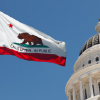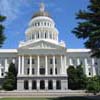Substitute Teaching Days Extended and Paid Sick Leave Increased Under Two Recent Senate Bills

November 2023
Number 41
Senate Bill 141 – Education Omnibus Budget Trailer Bill
On September 13, 2023, Governor Newsom signed Senate Bill (SB) 141 into law, which, among other things, temporarily extends the number of days a substitute teacher can teach in any one assignment. Pursuant to SB 141, any holder of a credential or permit issued by the Commission on Teacher Credentialing (CTC) that authorizes the holder to substitute teach in a general, special, or career technical education (CTE) may serve in a substitute teaching assignment aligned with their authorization for up to 60 cumulative days, including for staff vacancies, until July 1, 2024. Prior law had extended the amount of substitute teaching days to 60, but that law sunset on July 1, 2023.
Typically, California law limits how many days a substitute teacher can teach depending on the assignment and type of CTC-issued credential or substitute permit held. For example, an individual with a substitute teaching credential or an emergency substitute teaching permit is traditionally capped at 30 days in a general education or CTE assignment, and 20 days in a special education classroom. SB 141 increases this limit to 60 cumulative days for any one assignment. Also, a teacher who holds a credential in the subject or disability area(s) where they have been assigned as a substitute may serve in the substitute assignment indefinitely.
Senate Bill 616 – Healthy Workplaces, Healthy Families Act of 2014 Amendment
Effective January 1, 2024, SB 616 amends the Healthy Workplaces, Healthy Families Act of 2014 (Labor Code section 245 et seq.) to now require that eligible employees receive either five days or 40 hours of paid sick leave in each year of employment, calendar year, or 12-month period. This is an increase from three days or 24 hours of paid sick leave previously required.
The recent amendment provides that employers may continue allotting paid sick leave accrued at one hour for every 30 hours worked to eligible employees, per Labor Code section 246, subdivision (b). Employers may also continue to provide the full amount of leave at the beginning of each year of employment, calendar year, or 12-month period, referred to as “frontloading.” If, however, employers use a different accrual rate than providing one hour for every 30 hours worked, they must ensure that the accrual is provided on a regular basis so that an employee has no less than 24 hours of accrued sick leave or paid time off by the 120th calendar day of employment or each calendar year, or in each 12-month period. Further, employees must accrue 40 hours of paid sick leave or paid time off by the 200th calendar day of employment or each calendar year, or in each 12-month period.
Employers may still limit an employee’s annual use of paid sick leave; however, SB 616 increases the annual usage cap from three days or 24 hours to five days or 40 hours, in each year of employment, calendar year, or 12-month period. SB 616 continues to permit employers the option of capping the accrual amount of paid sick leave, which has increased to ten days or 80 hours under the amended law.
Notably, SB 616 continues to exempt employees covered by valid a collective bargaining agreement (CBA) that meets certain criteria. However, SB 616 now requires that CBA-covered employees be permitted to use sick leave for the same reasons as employees who are not subject to a CBA. This means that CBA-covered employees must be permitted to use paid sick leave for the diagnosis, care, or treatment of an existing health condition, preventive care for an employee or an employee’s family member, and for certain purposes for an employee who is a victim of domestic violence, sexual assault, or stalking. Employers may not require a CBA-covered employee who uses sick days to search for or find a replacement worker for those days. SB 616 also extends nonretaliation and procedural protections to CBA-covered employees.
Takeaways
Employers should be cautioned that the interpretation and effect of these new bills may be subject to revision based on pending guidance from the California Department of Industrial Relations (DIR), particularly if the DIR issues guidance regarding when exactly employees may access the additional paid sick leave days (i.e., on January 1, 2024, or otherwise). Though not legally required, a public agency may wish to consider providing all non-CBA covered employees with two extra days or 16 hours of paid sick leave on January 1, 2024, to ensure full compliance with amended portions of Labor Code sections 245, et seq.
If you have any questions regarding these new bills, please contact the authors of this Client News Brief or an attorney at one of our eight offices located statewide. You can also subscribe to our podcast, follow us on Facebook, Twitter and LinkedIn or download our mobile app.
Number 41
Senate Bill 141 – Education Omnibus Budget Trailer Bill
On September 13, 2023, Governor Newsom signed Senate Bill (SB) 141 into law, which, among other things, temporarily extends the number of days a substitute teacher can teach in any one assignment. Pursuant to SB 141, any holder of a credential or permit issued by the Commission on Teacher Credentialing (CTC) that authorizes the holder to substitute teach in a general, special, or career technical education (CTE) may serve in a substitute teaching assignment aligned with their authorization for up to 60 cumulative days, including for staff vacancies, until July 1, 2024. Prior law had extended the amount of substitute teaching days to 60, but that law sunset on July 1, 2023.
Typically, California law limits how many days a substitute teacher can teach depending on the assignment and type of CTC-issued credential or substitute permit held. For example, an individual with a substitute teaching credential or an emergency substitute teaching permit is traditionally capped at 30 days in a general education or CTE assignment, and 20 days in a special education classroom. SB 141 increases this limit to 60 cumulative days for any one assignment. Also, a teacher who holds a credential in the subject or disability area(s) where they have been assigned as a substitute may serve in the substitute assignment indefinitely.
Senate Bill 616 – Healthy Workplaces, Healthy Families Act of 2014 Amendment
Effective January 1, 2024, SB 616 amends the Healthy Workplaces, Healthy Families Act of 2014 (Labor Code section 245 et seq.) to now require that eligible employees receive either five days or 40 hours of paid sick leave in each year of employment, calendar year, or 12-month period. This is an increase from three days or 24 hours of paid sick leave previously required.
The recent amendment provides that employers may continue allotting paid sick leave accrued at one hour for every 30 hours worked to eligible employees, per Labor Code section 246, subdivision (b). Employers may also continue to provide the full amount of leave at the beginning of each year of employment, calendar year, or 12-month period, referred to as “frontloading.” If, however, employers use a different accrual rate than providing one hour for every 30 hours worked, they must ensure that the accrual is provided on a regular basis so that an employee has no less than 24 hours of accrued sick leave or paid time off by the 120th calendar day of employment or each calendar year, or in each 12-month period. Further, employees must accrue 40 hours of paid sick leave or paid time off by the 200th calendar day of employment or each calendar year, or in each 12-month period.
Employers may still limit an employee’s annual use of paid sick leave; however, SB 616 increases the annual usage cap from three days or 24 hours to five days or 40 hours, in each year of employment, calendar year, or 12-month period. SB 616 continues to permit employers the option of capping the accrual amount of paid sick leave, which has increased to ten days or 80 hours under the amended law.
Notably, SB 616 continues to exempt employees covered by valid a collective bargaining agreement (CBA) that meets certain criteria. However, SB 616 now requires that CBA-covered employees be permitted to use sick leave for the same reasons as employees who are not subject to a CBA. This means that CBA-covered employees must be permitted to use paid sick leave for the diagnosis, care, or treatment of an existing health condition, preventive care for an employee or an employee’s family member, and for certain purposes for an employee who is a victim of domestic violence, sexual assault, or stalking. Employers may not require a CBA-covered employee who uses sick days to search for or find a replacement worker for those days. SB 616 also extends nonretaliation and procedural protections to CBA-covered employees.
Takeaways
Employers should be cautioned that the interpretation and effect of these new bills may be subject to revision based on pending guidance from the California Department of Industrial Relations (DIR), particularly if the DIR issues guidance regarding when exactly employees may access the additional paid sick leave days (i.e., on January 1, 2024, or otherwise). Though not legally required, a public agency may wish to consider providing all non-CBA covered employees with two extra days or 16 hours of paid sick leave on January 1, 2024, to ensure full compliance with amended portions of Labor Code sections 245, et seq.
If you have any questions regarding these new bills, please contact the authors of this Client News Brief or an attorney at one of our eight offices located statewide. You can also subscribe to our podcast, follow us on Facebook, Twitter and LinkedIn or download our mobile app.
As the information contained herein is necessarily general, its application to a particular set of facts and circumstances may vary. For this reason, this News Brief does not constitute legal advice. We recommend that you consult with your counsel prior to acting on the information contained herein.






